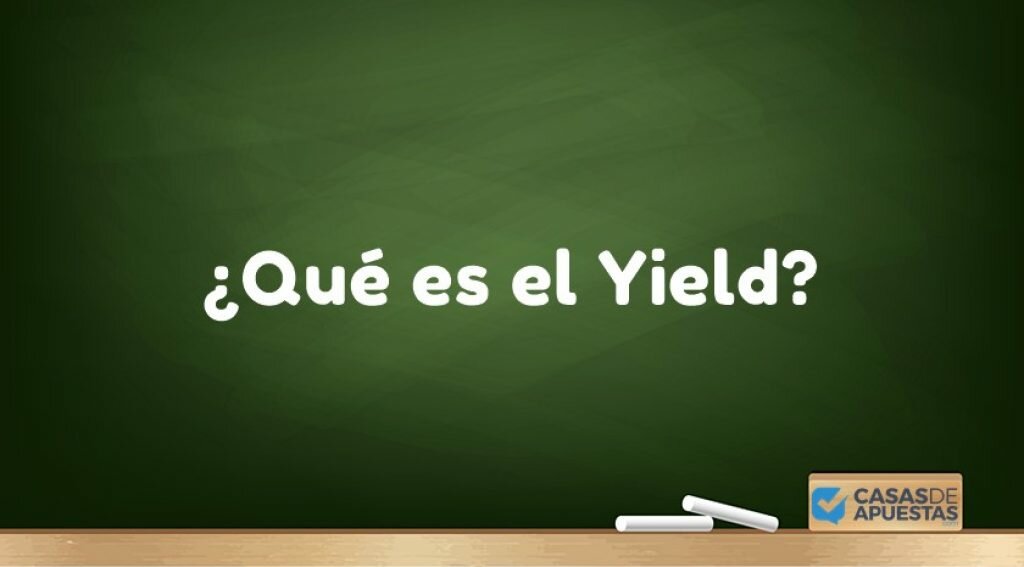
"Yield" is an English word that means "performance". The yield in sports betting is a concept that refers to the performance that the money bet produces, that is, how much net profit is obtained in relation to each euro bet. This performance is expressed as a percentage.
Table of contents
What is Yield?
To understand yield we must first be clear on these two terms that yield relates to:
- Net profit: It is the amount of money we have left once we subtract the money we have bet from what the house returns Philippines after a bet. Example: If we bet 10 dollars at a rate of 3.00 and we win the bet, the betting house deposits 30 dollars into our account. The net profit of this bet would be obtained by subtracting the 10 dollars we previously put into play from those 30 dollars. Therefore, the net profit of this bet would be 20 dollars.
- Total bet money: It is the sum of all the money that has been put into play and we want to calculate its yield, its performance, regardless of whether the bets ended up being winners or losers. Example: We have made five bets in which we have respectively played 5, 10, 30, 8 and 15 dollars. The total bet money would come from the sum of these amounts, regardless of the outcome of the bets: 5 + 10 + 30 + 8 + 15 = 68. The total bet money in these five bets is 68 dollars.
How is the yield calculated?
Calculating the yield of our bets is very easy. You just need to apply the following formula:
Yield = (net profit gained / total money bet) X 100
As can be seen, it is enough to divide the net profit obtained by the total amount of money bet. The result is multiplied by 100 to express it as a percentage.
We have placed 10 bets and earned a net profit of 20 dollars while wagering a total of 70 dollars. First, we divided the net profit by the amount wagered: 20 / 70 = 0.29. Next, we multiplied this result by 100: 0.29 X 100 = 29.
This result indicates that our yield is 29%, which means that for every euro we have bet, we have obtained a 29% profit, in this case, 29 euro cents of profit for every euro bet.
negative yield
What happens to the yield when we have no profits, when we are experiencing losses? Can we continue to calculate it? The answer is yes, but in this case the yield will be expressed as a negative value.
Example: Hacemos tres apuestas de 10 dollars cada una a cuotas de 2,00. Dos de las apuestas salen perdedoras y la otra sale ganadora, por lo que habremos obtenido -10, -10 y 20 dollars. Calculamos el beneficio neto de las tres apuestas, que sería - 10 - 10 + 10 = -10 dollars de beneficio neto. Calculamos el total apostado que sería 3 X 10 = 30 dollars apostados en total.Now we can calculate the yield using the formula: -10 (net profit) / 30 (total bet) = -0.33. Multiplying by 100, -0.33 X 100 = -33. We get a negative yield in these three bets of -33%. This means that for every euro we have bet, we have lost 33 cents.
What is the utility of the yield?
The main usefulness of yield is to find out how profitable our bets are. It makes sense especially in the long term, as a significant number of bets accumulate. Calculating yield with a few bets can produce highly distorted results, conditioned by good or bad streaks, while in the long term these tend to even out and compensate for each other.
It is also very useful for identifying good predictors or tipsters, bettors who share their predictions. A good tipster is recognized more for their yield than for the amount of money they have won. Ideally, a good bettor should end up with around a 5-10% yield in the long term, although as long as the yield is in positive numbers, it will be a good sign that money is being made.
Example: Imaginemos que dos tipsters, a los que llamaremos Javier y Laura, quieren averiguar quién consigue mejor rendimeinto con sus apuestas, siendo estos sus resultados:- Javier has achieved a net profit of 1,000 dollars by betting a total of 8,000 dollars.
- Laura has made a net profit of 500 dollars betting a total of 3,000 dollars.
At first glance, it seem that Javier is a better tipster because his profit is double that of Laura's. However, when calculating the yield of each one, we get the following:
- Javier's Yield: (1,000 / 8,000) X 100 = 12.5%
- Laura's Yield: (500 / 3,000) X 100 = 16.7%
Laura is the one with a higher yield, so she gets a greater profit for every euro she bets. This allows Philippines to establish that Laura is a better tipster than Javier.
Video: What is YIELD in SPORTS BETTING?